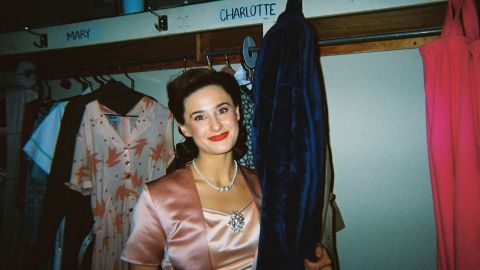Born to Sew
Getting into National Institute for Dramatic Art is a cutthroat experience for actors – but what about for the people who do all the cutting and sewing? Fiona Reilly explains to Neil Litchfield how costume students are chosen.
The costume course is for costume makers, supervisors, cutters, finishers and buyers. We only take four each year. We’re looking for the costume leaders of the future. The applicants have to do a costume project where they design and source fabric for a couple of costumes.
Then they come to a 45-minute interview, partially to test their skills and abilities, but also to see if they’re what we feel is suitable for the course, because it’s extremely rigorous. We look at their folio, and we also give them a sewing test.
What are the particular qualities / skills, or range of skills / qualities you look for?
We want them to have a basic sewing ability. They don’t have to be experts yet. From there we’re looking for people who are very good team workers who have the ability to grow, but also to explore. There’s quite a strong academic research component of the costume course, because we expect them to understand the intellectual and historical aspects of what they’re making.
It’s that intellectual quality to contribute to the life of the costume beyond just the technique that we’re looking for. But they also need to have personality to work as a team, and the potential to become a leader – to lead a workroom, manage a multi-million dollar film budget and manage 60 people working under them.
How diverse are the backgrounds of the costume students?
Some of them have already done some sort of sewing course, quite often at TAFE. I can think of one student who was accepted into the costume course about six years ago, but she was also accepted into Medicine, and family pressure was, of course, to do Medicine. She got half way through her medical degree, and thought, no, this is not where my passion lies, and she came back to us.
What extra resources do students get at NIDA?
We have a dye room, which is really important, because virtually everything we make is dyed by us, so we’re never at the mercy of the vagaries of what colours are in fashion this month. Then we have an extensive costume store, which is basically the repository of decades of costumes from NIDA.
We also have a costume research collection, which includes original garments from different eras, which the students can handle and study so that they can understand the fabrics of different periods.
We do have two dresses that go back to about 1800, which is fabulous.
How diverse are the challenges that will be presented to a student over the period of their course?
Each of the projects is different. For example, if a student is working on a zany, weird and wonderful interpretation of something, then the next production they get will probably be a contemporary production, or a very cinematic documentary realism.
Some may be suitable for close-up on the big cinema screen whereas we do another project, a draping project, where they deliberately have to make for the opera stage. So every time they ask my opinion on something, I’d say let’s put it at the end of the corridor and walk right to the far end so that we can see what it would look like at the Sydney Opera House or somewhere like that.
What sort of practical leg-up in gaining access to the industry do students get through these courses?
When I look at who is working where at the moment, I’d say that the first job experiences of 80% of our graduates are with people they’ve had exposure to during the course.
When they come out, because the people who train them are all working industry people, when the students come out they can fit in quite easily.
So, for example, on the film Australia I would say close to 70% of the costume department were our graduates. The cutter who made all of Nicole Kidman’s costumes is one of our part-time teachers, and she employed quite a few of our graduates to work with her exclusively on Nicole Kidman’s costumes.
Image from the NIDA production of Popular Mechanicals.
Originally published in the July / August 2010 edition of Stage Whispers





